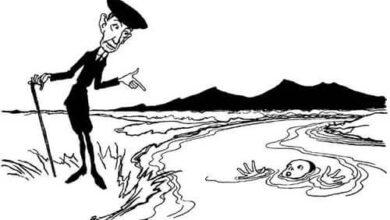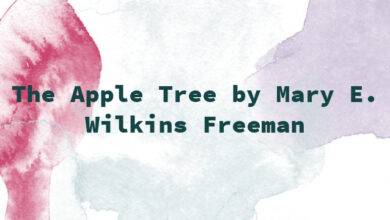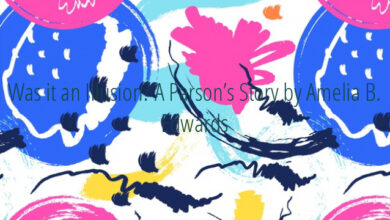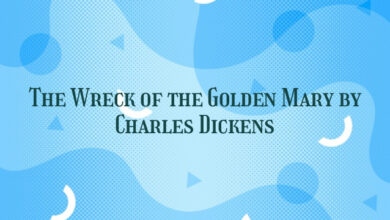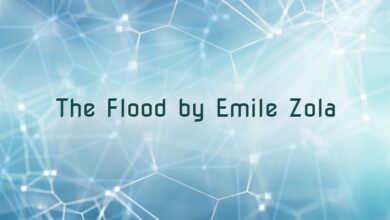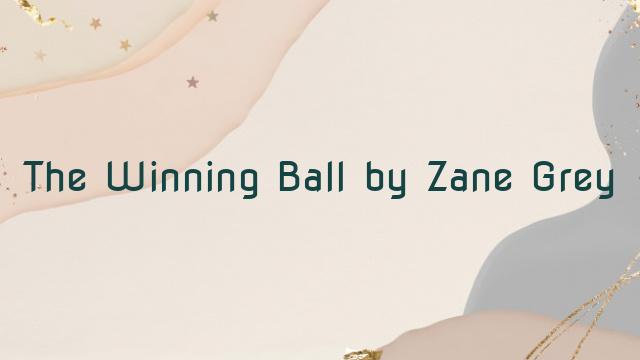
The Winning Ball by Zane Grey
The Winning Ball is a story about the “rabbit” — a baseball similar in appearance to the ordinary league ball; under its horse- hide cover, however, it was remarkably different.
One day in July our Rochester club, leader in the Eastern League, had returned to the hotel after winning a double-header from the Syracuse club. For some occult reason there was to be a lay-off next day and then on the following another double-header. These double-headers we hated next to exhibition games. Still a lay-off for twenty-four hours, at that stage of the race, was a Godsend, and we received the news with exclamations of pleasure.
After dinner we were all sitting and smoking comfortably in front of the hotel when our manager, Merritt, came hurriedly out of the lobby. It struck me that he appeared a little flustered.
Say, you fellars,'' he said brusquely.Pack your suits and be ready for the bus at seven- thirty.”
For a moment there was a blank, ominous silence, while we assimilated the meaning of his terse speech.
I've got a good thing on for tomorrow,'' continued the manager.Sixty per cent gate receipts if we win. That Guelph team is hot stuff, though.”
Guelph!'' exclaimed some of the players suspiciously.Where’s Guelph?”
“It’s in Canada. We’ll take the night express an’ get there tomorrow in time for the game. An’ we’ll hev to hustle.”
Upon Merritt then rained a multiplicity of excuses. Gillinger was not well, and ought to have that day’s rest. Snead’s eyes would profit by a lay-off. Deerfoot Browning was leading the league in base running, and as his legs were all bruised and scraped by sliding, a manager who was not an idiot would have a care of such valuable runmakers for his team. Lake had “Charley- horse.” Hathaway’s arm was sore. Bane’s stomach threatened gastritis. Spike Doran’s finger needed a chance to heal. I was stale, and the other players, three pitchers, swore their arms should be in the hospital.
Cut it out!'' said Merritt, getting exasperated.You’d all lay down on me–now, wouldn’t you? Well, listen to this: McDougal pitched today; he doesn’t go. Blake works Friday, he doesn’t go. But the rest of you puffed-up, high- salaried stiffs pack your grips quick. See? It’ll cost any fresh fellar fifty for missin’ the train.”
So that was how eleven of the Rochester team found themselves moodily boarding a Pullman en route for Buffalo and Canada. We went to bed early and arose late.
Guelph lay somewhere in the interior of Canada, and we did not expect to get there until 1 o’clock.
As it turned out, the train was late; we had to dress hurriedly in the smoking room, pack our citizen clothes in our grips and leave the train to go direct to the ball grounds without time for lunch.
It was a tired, dusty-eyed, peevish crowd of ball players that climbed into a waiting bus at the little station.
We had never heard of Guelph; we did not care anything about Rube baseball teams. Baseball was not play to us; it was the hardest kind of work, and of all things an exhibition game was an abomination.
The Guelph players, strapping lads, met us with every mark of respect and courtesy and escorted us to the field with a brass band that was loud in welcome, if not harmonious in tune.
Some 500 men and boys trotted curiously along with us, for all the world as if the bus were a circus parade cage filled with striped tigers. What a rustic, motley crowd massed about in and on that ball ground. There must have been 10,000.
The audience was strange to us. The Indians, half-breeds, French-Canadians; the huge, hulking, bearded farmers or traders, or trappers, whatever they were, were new to our baseball experience.
The players themselves, however, earned the largest share of our attention. By the time they had practiced a few moments we looked at Merritt and Merritt looked at us.
These long, powerful, big-handed lads evidently did not know the difference between lacrosse and baseball; but they were quick as cats on their feet, and they scooped up the ball in a way wonderful to see. And throw!–it made a professional’s heart swell just to see them line the ball across the diamond.
Lord! what whips these lads have!'' exclaimed Merritt.Hope we’re not up against it. If this team should beat us we wouldn’t draw a handful at Toronto. We can’t afford to be beaten. Jump around and cinch the game quick. If we get in a bad place, I’ll sneak in the `rabbit.’ ”
The “rabbit” was a baseball similar in appearance to the ordinary league ball; under its horse- hide cover, however, it was remarkably different.
An ingenious fan, a friend of Merritt, had removed the covers from a number of league balls and sewed them on rubber balls of his own making. They could not be distinguished from the regular article, not even by an experienced professional–until they were hit. Then! The fact that after every bounce one of these rubber balls bounded swifter and higher had given it the name of the “rabbit.”
Many a game had the rabbit'' won for us at critical stages. Of course it was against the rules of the league, and of course every player in the league knew about it; still, when it was judiciously and cleverly brought into a close game, therabbit” would be in play, and very probably over the fence, before the opposing captain could learn of it, let alone appeal to the umpire.
“Fellars, look at that guy who’s goin’ to pitch,” suddenly spoke up one of the team.
Many as were the country players whom we seasoned and traveled professionals had run across, this twirler outclassed them for remarkable appearance. Moreover, what put an entirely different tinge to our momentary humor was the discovery that he was as wild as a March hare and could throw a ball so fast that it resembled a pea shot from a boy’s air gun.
Deerfoot led our batting list, and after the first pitched ball, which he did not see, and the second, which ticked his shirt as it shot past, he turned to us with an expression that made us groan inwardly.
When Deerfoot looked that way it meant the pitcher was dangerous. Deerfoot made no effort to swing at the next ball, and was promptly called out on strikes.
I was second at bat, and went up with some reluctance. I happened to be leading the league in both long distance and safe hitting, and I doted on speed. But having stopped many mean in- shoots with various parts of my anatomy, I was rather squeamish about facing backwoods yaps who had no control.
When I had watched a couple of his pitches, which the umpire called strikes, I gave him credit for as much speed as Rusie. These balls were as straight as a string, singularly without curve, jump, or variation of any kind. I lined the next one so hard at the shortstop that it cracked like a pistol as it struck his hands and whirled him half off his feet. Still he hung to the ball and gave opportunity for the first crash of applause.
Boys, he's a trifle wild,'' I said to my team- mates,but he has the most beautiful ball to hit you ever saw. I don’t believe he uses a curve, and when we once time that speed we’ll kill it.”
Next inning, after old man Hathaway had baffled the Canadians with his wide, tantalizing curves, my predictions began to be verified. Snead rapped one high and far to deep right field. To our infinite surprise, however, the right fielder ran with fleetness that made our own Deerfoot seem slow, and he got under the ball and caught it.
Doran sent a sizzling grasscutter down toward left. The lanky third baseman darted over, dived down, and, coming up with the ball, exhibited the power of a throwing arm that made as all green with envy.
Then, when the catcher chased a foul fly somewhere back in the crowd and caught it, we began to take notice.
Lucky stabs!'' said Merritt cheerfully.They can’t keep that up. We’ll drive him to the woods next time.”
But they did keep it up; moreover, they became more brilliant as the game progressed. What with Hathaway’s heady pitching we soon disposed of them when at the bat; our turns, however, owing to the wonderful fielding of these backwoodsmen, were also fruitless.
Merritt, with his mind ever on the slice of gate money coming if we won, began to fidget and fume and find fault.
“You’re a swell lot of champions, now, ain’t you?” he observed between innings.
All baseball players like to bat, and nothing pleases them so much as base hits; on the other hand, nothing is quite so painful as to send out hard liners only to see them caught. And it seemed as if every man on our team connected with that lanky twirler’s fast high ball and hit with the force that made the bat spring only to have one of these rubes get his big hands upon it.
Considering that we were in no angelic frame of mind before the game started, and in view of Merritt’s persistently increasing ill humor, this failure of ours to hit a ball safely gradually worked us into a kind of frenzy. From indifference we passed to determination, and from that to sheer passionate purpose.
Luck appeared to be turning in the sixth inning. With one out, Lake hit a beauty to right. Doran beat an infield grounder and reached first. Hathaway struck out.
With Browning up and me next, the situation looked rather precarious for the Canadians.
Say, Deerfoot,'' whispered Merritt,dump one down the third-base line. He’s playin’ deep. It’s a pipe. Then the bases will be full an’ Reddy’ll clean up.”
In a stage like that Browning was a man absolutely to depend upon. He placed a slow bunt in the grass toward third and sprinted for first. The third baseman fielded the ball, but, being confused, did not know where to throw it.
Stick it in your basket,'' yelled Merritt, in a delight that showed how hard he was pulling for the gate money, and his beaming smile as he turned to me was inspiring.Now, Reddy, it’s up to you! I’m not worrying about what’s happened so far. I know, with you at bat in a pinch, it’s all off!”
Merritt’s compliment was pleasing, but it did not augment my purpose, for that already had reached the highest mark. Love of hitting, if no other thing, gave me the thrilling fire to arise to the opportunity. Selecting my light bat, I went up and faced the rustic twirler and softly said things to him.
He delivered the ball, and I could have yelled aloud, so fast, so straight, so true it sped toward me. Then I hit it harder than I had ever hit a ball in my life. The bat sprung, as if it were whalebone. And the ball took a bullet course between center and left. So beautiful a hit was it that I watched as I ran.
Out of the tail of my eye I saw the center fielder running. When I rounded first base I got a good look at this fielder, and though I had seen the greatest outfielders the game ever produced, I never saw one that covered ground so swiftly as he.
On the ball soared, and began to drop; on the fielder sped, and began to disappear over a little hill back of his position. Then he reached up with a long arm and marvelously caught the ball in one hand. He went out of sight as I touched second base, and the heterogeneous crowd knew about a great play to make more noise than a herd of charging buffalo.
In the next half inning our opponents, by clean drives, scored two runs and we in our turn again went out ignominiously. When the first of the eighth came we were desperate and clamored for the “rabbit.”
I've sneaked it in,'' said Merritt, with a low voice.Got it to the umpire on the last passed ball. See, the pitcher’s got it now. Boys, it’s all off but the fireworks! Now, break loose!”
A peculiarity about the “rabbit” was the fact that though it felt as light as the regulation league ball it could not be thrown with the same speed and to curve it was an impossibility.
Bane hit the first delivery from our hoosier stumbling block. The ball struck the ground and began to bound toward short. With every bound it went swifter, longer and higher, and it bounced clear over the shortstop’s head. Lake chopped one in front of the plate, and it rebounded from the ground straight up so high that both runners were safe before it came down.
Doran hit to the pitcher. The ball caromed his leg, scooted fiendishly at the second baseman, and tried to run up all over him like a tame squirrel. Bases full!
Hathaway got a safe fly over the infield and two runs tallied. The pitcher, in spite of the help of the umpire, could not locate the plate for Balknap, and gave him a base on balls. Bases full again!
Deerfoot slammed a hot liner straight at the second baseman, which, striking squarely in his hands, recoiled as sharply as if it had struck a wall. Doran scored, and still the bases were filled.
The laboring pitcher began to get rattled; he could not find his usual speed; he knew it, but evidently could not account for it.
When I came to bat, indications were not wanting that the Canadian team would soon be up in the air. The long pitcher delivered the “rabbit,” and got it low down by my knees, which was an unfortunate thing for him. I swung on that one, and trotted round the bases behind the runners while the center and left fielders chased the ball.
Gillinger weighed nearly two hundred pounds, and he got all his weight under the rabbit.'' It went so high that we could scarcely see it. All the infielders rushed in, and after staggering around, with heads bent back, one of them, the shortstop, managed to get under it. Therabbit” bounded forty feet out of his hands!
When Snead’s grounder nearly tore the third baseman’s leg off; when Bane’s hit proved as elusive as a flitting shadow; when Lake’s liner knocked the pitcher flat, and Doran’s fly leaped high out of the center fielder’s glove–then those earnest, simple, country ballplayers realized something was wrong. But they imagined it was in themselves, and after a short spell of rattles, they steadied up and tried harder than ever. The motions they went through trying to stop that jumping jackrabbit of a ball were ludicrous in the extreme.
Finally, through a foul, a short fly, and a scratch hit to first, they retired the side and we went into the field with the score 14 to 2 in our favor.
But Merritt had not found it possible to get the “rabbit” out of play!
We spent a fatefully anxious few moments squabbling with the umpire and captain over the “rabbit.” At the idea of letting those herculean railsplitters have a chance to hit the rubber ball we felt our blood run cold.
“But this ball has a rip in it,” blustered Gillinger. He lied atrociously. A microscope could not have discovered as much as a scratch in that smooth leather.
Sure it has,'' supplemented Merritt, in the suave tones of a stage villain.We’re used to playing with good balls.”
Why did you ring this one in on us?'' asked the captain.We never threw out this ball. We want a chance to hit it.”
That was just the one thing we did not want them to have. But fate played against us.
Get up on your toes, now an' dust,'' said Merritt.Take your medicine, you lazy sit-in-front- of-the-hotel stiffs! Think of pay day!”
Not improbably we all entertained the identical thought that old man Hathaway was the last pitcher under the sun calculated to be effective with the rabbit.'' He never relied on speed; in fact, Merritt often scornfully accused him of being unable to break a pane of glass; he used principally what we called floaters and a change of pace. Both styles were absolutely impractical with therabbit.”
“It’s comin’ to us, all right, all right!” yelled Deerfoot to me, across the intervening grass. I was of the opinion that it did not take any genius to make Deerfoot’s ominous prophecy.
Old man Hathaway gazed at Merritt on the bench as if he wished the manager could hear what he was calling him and then at his fellow- players as if both to warn and beseech them. Then he pitched the “rabbit.”
Crack!
The big lumbering Canadian rapped the ball at Crab Bane. I did not see it, because it went so fast, but I gathered from Crab’s actions that it must have been hit in his direction. At any rate, one of his legs flopped out sidewise as if it had been suddenly jerked, and he fell in a heap. The ball, a veritable “rabbit” in its wild jumps, headed on for Deerfoot, who contrived to stop it with his knees.
The next batter resembled the first one, and the hit likewise, only it leaped wickedly at Doran and went through his hands as if they had been paper. The third man batted up a very high fly to Gillinger. He clutched at it with his huge shovel hands, but he could not hold it. The way he pounced upon the ball, dug it out of the grass, and hurled it at Hathaway, showed his anger.
Obviously Hathaway had to stop the throw, for he could not get out of the road, and he spoke to his captain in what I knew were no complimentary terms.
Thus began retribution. Those husky lads continued to hammer the “rabbit” at the infielders and as it bounced harder at every bounce so they batted harder at every bat.
Another singular feature about the “rabbit” was the seeming impossibility for professionals to hold it. Their familiarity with it, their understanding of its vagaries and inconsistencies, their mortal dread made fielding it a much more difficult thing than for their opponents.
By way of variety, the lambasting Canadians commenced to lambast a few over the hills and far away, which chased Deerfoot and me until our tongues lolled out.
Every time a run crossed the plate the motley crowd howled, roared, danced and threw up their hats. The members of the batting team pranced up and down the side lines, giving a splendid imitation of cannibals celebrating the occasion of a feast.
Once Snead stooped down to trap the “rabbit,” and it slipped through his legs, for which his comrades jeered him unmercifully. Then a brawny batter sent up a tremendously high fly between short and third.
“You take it!” yelled Gillinger to Bane.
“You take it!” replied the Crab, and actually walked backward. That ball went a mile high. The sky was hazy, gray, the most perplexing in which to judge a fly ball. An ordinary fly gave trouble enough in the gauging.
Gillinger wandered around under the ball for what seemed an age. It dropped as swiftly as a rocket shoots upward. Gillinger went forward in a circle, then sidestepped, and threw up his broad hands. He misjudged the ball, and it hit him fairly on the head and bounced almost to where Doran stood at second.
Our big captain wilted. Time was called. But Gillinger, when he came to, refused to leave the game and went back to third with a lump on his head as large as a goose egg.
Every one of his teammates was sorry, yet every one howled in glee. To be hit on the head was the unpardonable sin for a professional.
Old man Hathaway gradually lost what little speed he had, and with it his nerve. Every time he pitched the “rabbit” he dodged. That was about the funniest and strangest thing ever seen on a ball field. Yet it had an element of tragedy.
Hathaway’s expert contortions saved his head and body on divers occasions, but presently a low bounder glanced off the grass and manifested an affinity for his leg.
We all knew from the crack and the way the pitcher went down that the “rabbit” had put him out of the game. The umpire called time, and Merritt came running on the diamond.
Hard luck, old man,'' said the manager.That’ll make a green and yellow spot all right. Boys, we’re still two runs to the good. There’s one out, an’ we can win yet. Deerfoot, you’re as badly crippled as Hathaway. The bench for yours. Hooker will go to center, an’ I’ll pitch.”
Merritt’s idea did not strike us as a bad one. He could pitch, and he always kept his arm in prime condition. We welcomed him into the fray for two reasons–because he might win the game, and because he might be overtaken by the baseball Nemesis.
While Merritt was putting on Hathaway’s baseball shoes, some of us endeavored to get the “rabbit” away from the umpire, but he was too wise.
Merritt received the innocent-looking ball with a look of mingled disgust and fear, and he summarily ordered us to our positions.
Not far had we gone, however, when we were electrified by the umpire’s sharp words:
“Naw! Naw, you don’t. I saw you change the ball I gave you fer one in your pocket! Naw! You don’t come enny of your American dodges on us! Gimmee thet ball, an’ you use the other, or I’ll stop the game.”
Wherewith the shrewd umpire took the ball from Merritt’s hand and fished the rabbit'' from his pocket. Our thwarted manager stuttered his wrath.Y-you be-be-wh-whiskered y-yap! I’ll g-g-give—-”
What dire threat he had in mind never materialized, for he became speechless. He glowered upon the cool little umpire, and then turned grandly toward the plate.
It may have been imagination, yet I made sure Merritt seemed to shrink and grow smaller before he pitched a ball. For one thing the plate was uphill from the pitcher’s box, and then the fellow standing there loomed up like a hill and swung a bat that would have served as a wagon tongue. No wonder Merritt evinced nervousness. Presently he whirled and delivered the ball.
Bing!
A dark streak and a white puff of dust over second base showed how safe that hit was. By dint of manful body work, Hooker contrived to stop the “rabbit” in mid-center. Another run scored. Human nature was proof against this temptation, and Merritt’s players tendered him manifold congratulations and dissertations.
“Grand, you old skinflint, grand!”
“There was a two-dollar bill stickin’ on thet hit. Why didn’t you stop it?”
`Say, Merritt, what little brains you've got will presently be ridin' on therabbit.’ ”
“You will chase up these exhibition games!”
“Take your medicine now. Ha! Ha! Ha!”
After these merciless taunts, and particularly after the next slashing hit that tied the score, Merritt looked appreciably smaller and humbler.
He threw up another ball, and actually shied as it neared the plate.
The giant who was waiting to slug it evidently thought better of his eagerness as far as that pitch was concerned, for he let it go by.
Merritt got the next ball higher. With a mighty swing, the batsman hit a terrific liner right at the pitcher.
Quick as lightning, Merritt wheeled, and the ball struck him with the sound of two boards brought heavily together with a smack.
Merritt did not fall; he melted to the ground and writhed while the runners scored with more tallies than they needed to win.
What did we care! Justice had been done us, and we were unutterably happy. Crabe Bane stood on his head; Gillinger began a war dance; old man Hathaway hobbled out to the side lines and whooped like an Indian; Snead rolled over and over in the grass. All of us broke out into typical expressions of baseball frenzy, and individual ones illustrating our particular moods.
Merritt got up and made a dive for the ball. With face positively flaming he flung it far beyond the merry crowd, over into a swamp. Then he limped for the bench. Which throw ended the most memorable game ever recorded to the credit of the “rabbit.”
